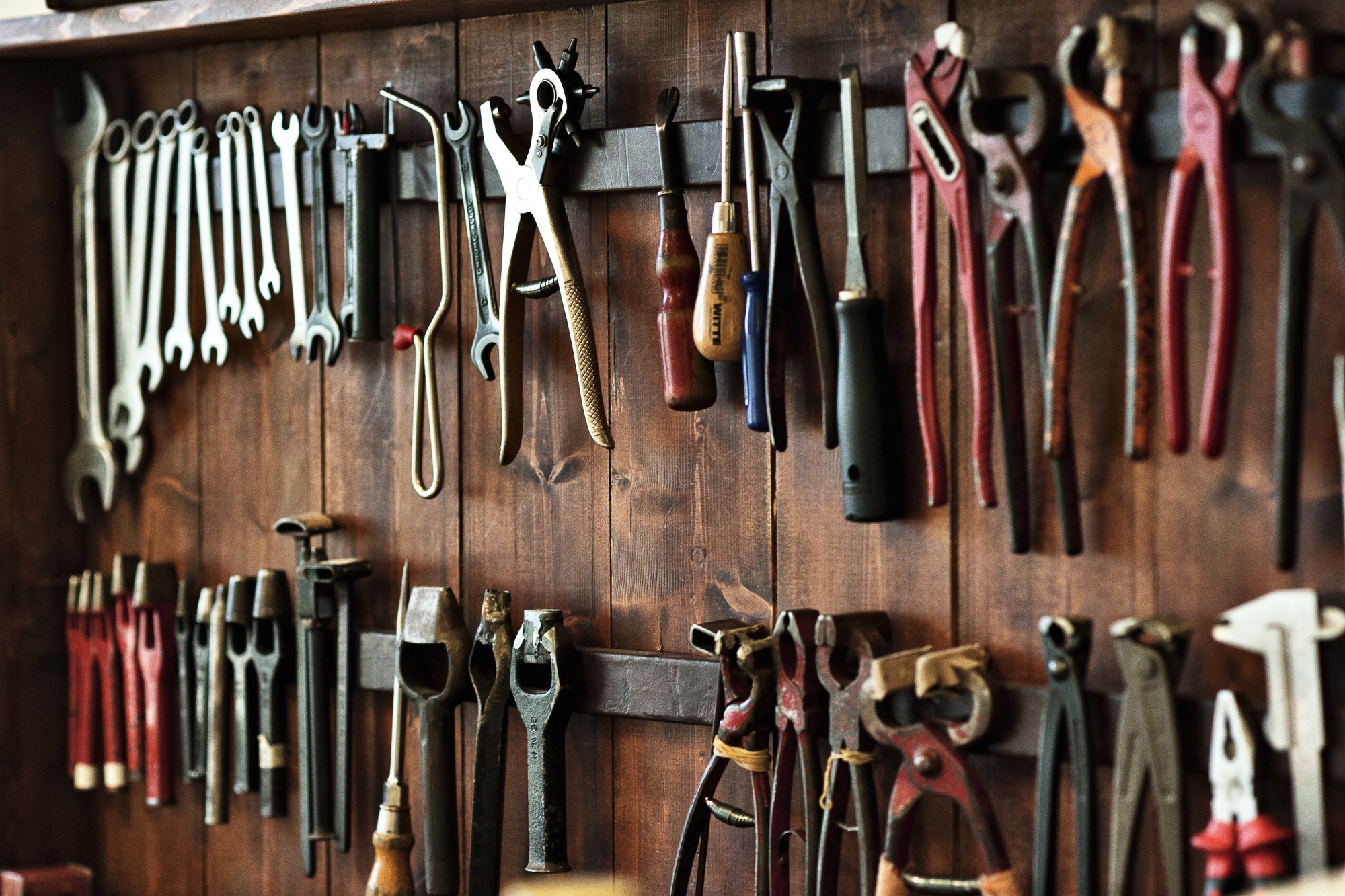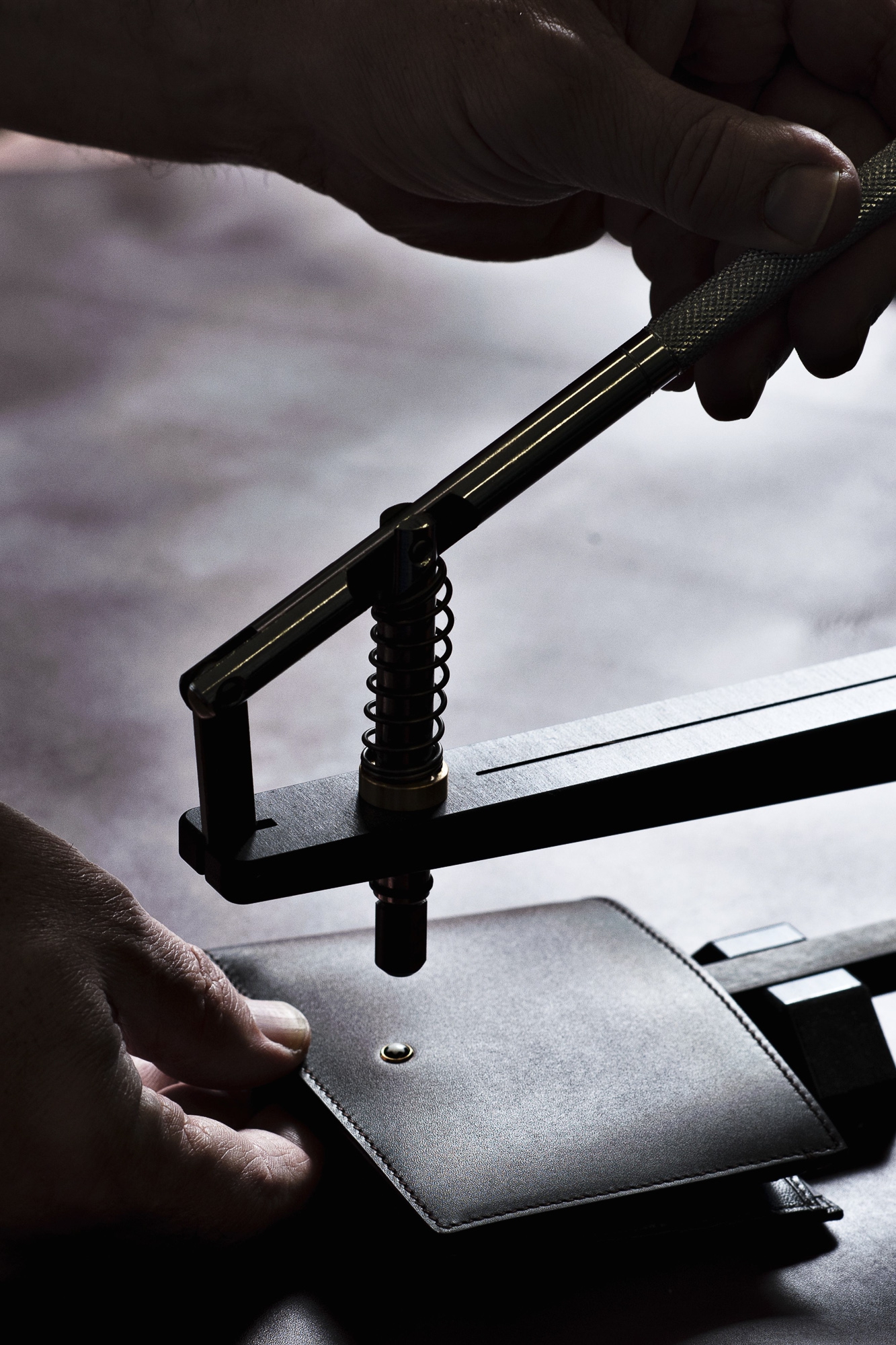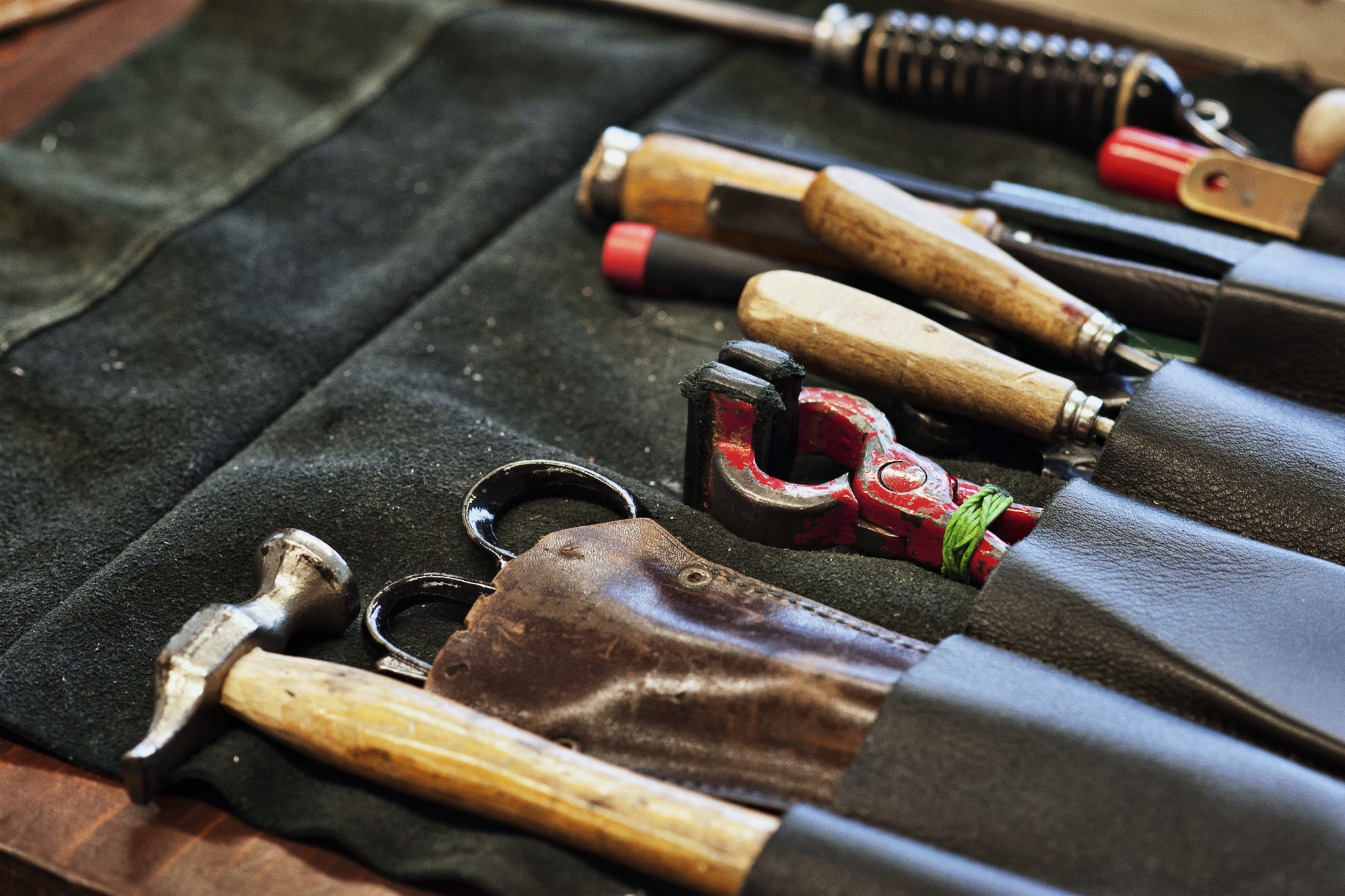My visit to the Montblanc leather goods atelier begins in the laboratory where an examination and evaluation of the raw materials is carried out. Kept at a constant temperature of 23° Celsius to ensure all tests are carried out under constantly controlled conditions, the laboratory is an ensemble of rooms containing equipment specially designed for this purpose.
The tests are very specific, aimed at evaluating the quality of the hides, but also to reduce the risk of the finished goods being subject to wear and tear over time. The strofinío test, for example, consists of rubbing a sample of the leather against a test fabric to see if it stains it with its dye or if it is altered in any way, while the fleximeter folds the cutting to analyse how it behaves “under duress”. The spectrometer, on the other hand, calculates the quantity of top-grade material to be applied on the base of a metallic component (usually made of brass) like a belt buckle: this test is particularly important, considering that the quantity of gold or silver has to be perfectly calculated in order to avoid it being removed by a mere scratch. The xenotest, on the other hand, reproduces sunlight to gauge how it might affect the product: at the end of this examination, the colour of a good piece of leather should not be too far removed from its original shade. You remain mesmerized by the robot with the eerily human-like arm that tests the resistance of straps: each product is subjected to 1,500 cycles, lasting a total of 8-10 hours.
The next step is a visit to the customer care facilities, where the Montblanc artisans repair and restore products. The contrast between the avant-garde technology of the machines next door and the ages-old know-how of these craftsmen takes your breath away. “My father trained me in this trade from when I was twelve; today I’m sixty-five, and I still don’t want to retire,” explains the head of the department, while he delicately picks up a sample of leather before it is sewn with a tool that resembles a relic from bygone days.
The last step is the prototype creation unit, where the new collections see the light of day, designed and created in card, in microfiber or using CAD. Here, besides the prototypes, the Montblanc artisans create special collections and made-to-order products. Once approved, every prototype is sent out to craftsman - both in the local area and beyond - to be brought to life. Giacomo, the head of the division, tells me that there are two hundred new pieces for the SS17 season, and the target customer for the maison is the contemporary urban gentleman, one who is always on the move; that is why there is so much research into how to offer a versatile, quality product that meets with the customers’ aesthetic demands, as witnessed by the in-depth study carried out on handles and volumes. To sum things up, let’s delve into a few numbers: the prototypes are created by a team of ten specialist craftsmen; each of these craftsmen creates one leatherware prototype of a small dimension, the larger ones requiring a day and a half.
And on June 14th, the day after my visit, the tattoo artist Mo Coppoletta put on a live performance exhibition, (see photos) tattooing the interiors of some limited edition bags at the Montblanc boutique of Via Tornabuoni, in Florence. “The basic concept remains the same,” explains the designer Zaim Kamal. “At the end of the day, it’s writing on skin.”
Bespoke hugs,
Fabio




.jpg)
.jpg)
.jpg)
.jpg)


.jpg)
.jpg)


